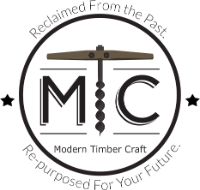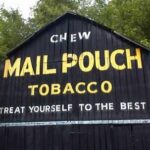If you drive on the rural stretches of America’s farmlands, you may come across an unusual sight. On the road-facing exterior walls of multiple US barns are painted murals for Mail Pouch chewing tobacco. These Mail Pouch Tobacco barn signs were part of an advertisement campaign that started in the early 1890s for the Bloch Brothers Tobacco Company, based in West Virginia.
Over 20,000 Mail Pouch Tobacco signs adorn barns in 22 states across the US. These eye-catching pseudo-billboards were painted initially by six men hired to travel the country and paint as many signs as possible. The painting crews were expanded following World War II.
The barn walls are typically hand-painted with a black or red background and white or yellow capital lettering reading "Chew Mail Pouch Tobacco--Treat Yourself to the Best."
Many of the paintings are strewn throughout the upper Midwest states. Ohio is home to over 800 documented locations, while Pennsylvania hosts nearly 475. There are some as far west as California and as east as Connecticut and New York.
The most prolific Mail Pouch barn painter
Harley Warrick went to work as a painter for Bloch Brothers Tobacco in 1946, following deployment in WW II. He has claimed to have painted nearly 20,000 barn signs himself. Warrick, who passed away in 2000, estimated that a single painting project took an average of 6 hours per day – which, if accurate, would mean he completed at least one barn project per day for 54 years!
According to his family, At that time there were four crews of two men. He later became the main sign painter on a crew. Eventually, through attrition, he was the only one left. He later retired in the early 1990s. The barn painting campaign ended shortly thereafter.
Barn owners get paid
Barn owners would often be paid a leasing fee, and some received free chewing tobacco as well. Many valued the fresh coat of durable paint for their exposed exteriors, which helped extend the life of the barn. In some cases, the company would even repaint the barns every few years, preserving the image and the barn’s exterior.
Popularity spreads to other advertisements
The campaign was so popular that other brands began using barn walls for their advertisements.
According to Wikipedia,
“In the heyday of barn advertising (around 1900–1940) many companies paid farmers to use their barns as roadside ads, with other tobacco products such as ‘Beech Nut’ tobacco and local feed and grain stores being the most common. But Mail Pouch was the only product advertised in so widespread and consistent a manner in this fashion.”
Protected by law
The popularity of the Mail Pouch signs helped to protect them from becoming a lost icon in US history. When Lyndon B. Johnson passed the Highway Beautification Act in 1965, much of the country’s highway advertising ended. However, the act was amended in 1974 to allow landmark signs like the Mail Pouch Tobacco to remain. The amendment officially recognized them as historic landmarks.
Mail Pouch Tobacco barn fans unite
There has even been a group formed called the Mail Pouch Barnstormers – with 140+ members – that has been documenting the historic chewing tobacco ad campaign.
Since the group started classifying the barn signs, they’ve uncovered different versions. Some have images of a pouch of tobacco and different fonts, and many have been painted in a much more creative way. These are being found in places the group never even imagined, such as downtown Detroit. Now, barn owners are even commissioning new versions of the iconic sign on their barn exteriors.
If you find a Mail Pouch Tobacco sign on a barn, you can join the Barnstormers Facebook account and post a picture here. So if you’re out on the roads, keep an eye out for these iconic parts of America’s history!
Want to learn more about reclaimed wood history? Check out our post on the famous Resolute Desk.

Written by Jake Park
Jake is the founder of Modern Timber Craft and is a seasoned reclaimed woodworking enthusiast with over 20 years experience.
Here's a post on various barn styles - enjoy!


